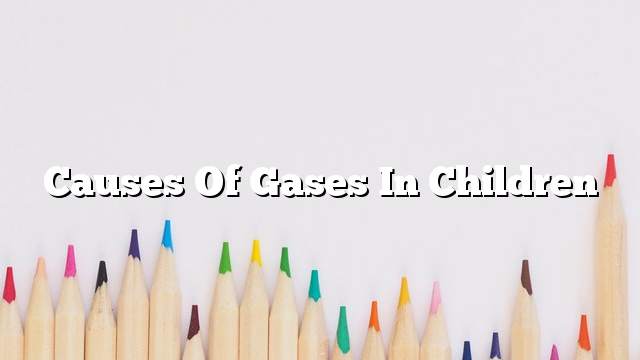Gases in children
Newborns suffer from the problem of flatulence caused by gas, and it may be difficult for the mother to identify this problem especially as babies cry. The problem of gases in children for a number of reasons will be identified during this article.
Causes of gases in children
The problem of gases in children prevents them from sleeping, and may cry the child at length with the observation of some movements, as if trying to suggest that there is pain suffered in the abdomen, and the causes of gas in children:
- The mother takes some medical drugs containing lactose. When breastfeeding the child, this substance is transmitted to the baby because she has entered his mother’s milk.
- Eat foods that cause bloating like legumes and other foods.
- Persistent crying causes the air to enter and accumulate in the baby’s belly, forming the gas, and thus painful swelling.
- Feeding the child in the wrong way, so that the mother does not enter the full nipple in the child’s mouth, which facilitates the process of entering the air during breastfeeding.
- Incomplete digestive system of the infant, which means that he can not fully digest milk, whether milk is natural or artificial.
- The type of formula milk may be inappropriate for the child, which forms his or her gases.
- Older children may get gas from eating solid foods so they can not chew and digest properly, especially when the mother begins feeding her baby at six months of age, and is still young and has not yet fully developed.
Treatment of the problem of gases in children
To solve the problem of gases in children, we advise the mother to:
- The distribution of feeding meals to be given at specific times as possible, with the lifting of the child after each breast feeding on the shoulder of the mother and bred him to be surprised, and this is one of the most important things that each woman must do, because this process is the child that gets rid of the air that entered the stomach during Breast feeding.
- In the case of artificial feeding, it is best to choose a bottle of lactation in a crooked and non-straight shape to reduce the amount of air withdrawn during feeding.
- Observe the baby and change the milk type as soon as the mother sees gas in her child frequently, but after consultation with the doctor.
- Wrap the baby and put it on the mother’s knees and his heart on his stomach, and put the mother’s hand under his stomach to facilitate the exit of gases.
- Place a wet towel with warm water on the baby’s belly to ease the pain.
- Massage the baby’s belly with olive oil in a circular way to facilitate the movement of the gases and their exit.
- If the child is eating, the food should be crushed before serving it.
- Giving the child a quantity of water a day if he is old allows it; water has a powerful effect in expelling gases.
There are cases where the child is infected with milk allergy, does not tolerate stomach lactose found in it and therefore consist of gases, and these cases that require follow-up doctor to see the necessary treatment.
